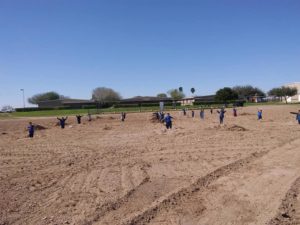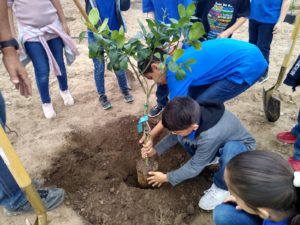Young children need fruits and vegetables daily to support healthy growth and brain development. A new study found that in the week prior, many Texas children did not eat a fruit or a vegetable daily and regularly drank sugary drinks. Learn what parents and caregivers can do. https://www.cdc.gov/nccdphp/dnpao/features/nutrition-month/index.html

 The orchard was established in January 2020 as part of a Starr County Farm to School
The orchard was established in January 2020 as part of a Starr County Farm to School

 Farm to school implementation differs by location but always includes one or more of the following:
Farm to school implementation differs by location but always includes one or more of the following:
